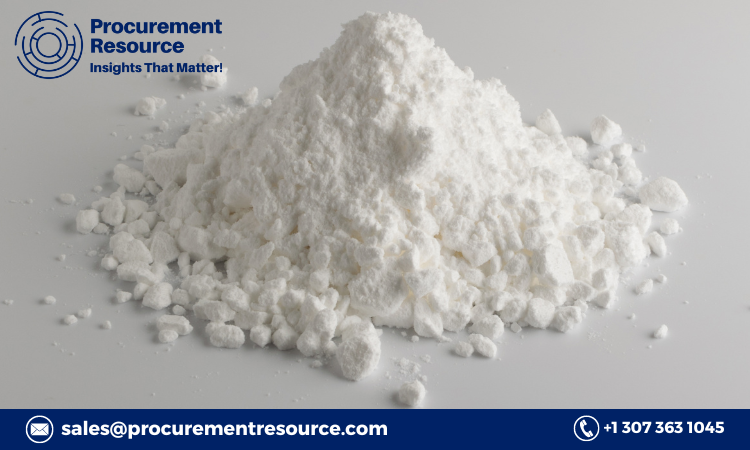
Bone phosphate of lime (BPL), also known as bone ash or simply bone phosphate, is a valuable fertilizer and industrial material derived from the processing of animal bones. Rich in phosphorus and calcium, BPL serves as a vital nutrient source for plants and crops, contributing to agricultural productivity and soil fertility. Bone Phosphate of Lime Production Cost Process involves several intricate processes and cost factors, which impact its overall economic viability. In this article, we delve into the complexities of BPL production, examining the key cost drivers, production methods, and economic implications for stakeholders.
Understanding Bone Phosphate of Lime
Bone phosphate of lime is primarily composed of calcium phosphate, along with traces of other minerals and organic matter. It is produced through the calcination of animal bones, followed by chemical treatment to extract and purify the phosphorus and calcium compounds. The resulting product is a fine powder or granular material, which is commonly used as a fertilizer in agriculture and as a raw material in various industrial applications.
Request For Free Sample: https://www.procurementresource.com/production-cost-report-store/bone-phosphate-of-lime/request-sample
Production Processes
The production of bone phosphate of lime typically involves the following steps:
-
Raw Material Preparation: Animal bones, sourced from slaughterhouses, meat processing plants, or rendering facilities, are cleaned, crushed, and dried to remove moisture and organic matter. The bones are then ground into a fine powder or granules to facilitate subsequent processing.
-
Calcination: The ground bone meal is subjected to high temperatures in a kiln or furnace to undergo calcination, a process that removes organic impurities and converts the calcium carbonate (CaCO3) present in the bones into calcium oxide (CaO) and carbon dioxide (CO2). This step is critical for decomposing the bone matrix and releasing the phosphorus compounds.
-
Acidulation: The calcined bone ash is treated with sulfuric acid (H2SO4) or phosphoric acid (H3PO4) to solubilize the phosphorus and calcium compounds, forming soluble phosphate salts such as monocalcium phosphate (Ca(H2PO4)2) and dicalcium phosphate (CaHPO4). This acidulation process also helps in neutralizing any remaining alkalinity and adjusting the pH of the final product.
-
Filtration and Purification: The acidulated bone phosphate solution is filtered to remove insoluble impurities and residues, yielding a clear phosphate solution. Additional purification steps, such as precipitation, sedimentation, and filtration, may be employed to further refine the product and enhance its purity.
-
Drying and Granulation: The purified bone phosphate solution is dried to remove excess moisture and converted into a dry powder or granular form suitable for storage, transportation, and application as a fertilizer or industrial material.
Cost Drivers in BPL Production
Several factors influence the production cost of bone phosphate of lime, including:
-
Raw Material Cost: The cost of raw materials, primarily animal bones, constitutes a significant portion of the production cost. Fluctuations in bone meal prices, availability of raw materials, and transportation costs can impact overall production expenses.
-
Energy Consumption: The calcination process requires substantial energy input for heating the kiln or furnace to high temperatures. Energy costs, including electricity, natural gas, or fuel oil, contribute to operational expenses and production costs.
-
Chemical Reagents: The use of sulfuric acid or phosphoric acid for acidulation adds to production costs. Prices of chemical reagents, as well as transportation and storage costs, influence the overall cost of chemical treatment and purification processes.
-
Labor and Equipment: Labor-intensive processes such as bone preparation, calcination, and chemical treatment require skilled manpower and specialized equipment. Investment in machinery, maintenance, and labor wages affects production costs.
-
Regulatory Compliance: Compliance with environmental regulations, safety standards, and quality control measures adds regulatory compliance costs to BPL production. Monitoring, testing, and certification requirements contribute to operational expenses.
Economic Implications and Market Dynamics
The economic viability of bone phosphate of lime production is influenced by various market dynamics, including:
-
Agricultural Demand: The demand for fertilizers, including phosphate-based fertilizers such as BPL, is driven by agricultural activities, crop cultivation, and soil management practices. Fluctuations in agricultural commodity prices, crop yields, and government policies affect fertilizer demand and market dynamics.
-
Global Phosphate Market: BPL production is part of the broader phosphate industry, which encompasses various phosphate compounds used in agriculture, industry, and food processing. Global phosphate supply-demand dynamics, phosphate rock prices, and geopolitical factors impact market trends and pricing mechanisms.
-
Technological Innovation: Advances in production technologies, process optimization, and product development can enhance production efficiency, reduce costs, and improve product quality. Investments in research and development (R&D) are essential for staying competitive in the phosphate industry.
-
Environmental Sustainability: Increasing emphasis on environmental sustainability, resource conservation, and circular economy principles present both challenges and opportunities for BPL producers. Sustainable production practices, waste management strategies, and eco-friendly technologies can enhance market competitiveness and brand reputation.
Conclusion
The production cost of bone phosphate of lime is influenced by a combination of factors, including raw material prices, energy consumption, chemical reagents, labor, equipment, and regulatory compliance. Understanding these cost drivers and economic implications is essential for producers, processors, traders, and other stakeholders involved in the phosphate industry.
Despite the challenges posed by production costs and market dynamics, the demand for bone phosphate of lime remains robust, driven by its essential role in agriculture and industrial applications. By adopting efficient production processes, investing in technology and innovation, and responding to evolving market trends, BPL producers can navigate challenges and capitalize on opportunities in the dynamic global phosphate market landscape.






